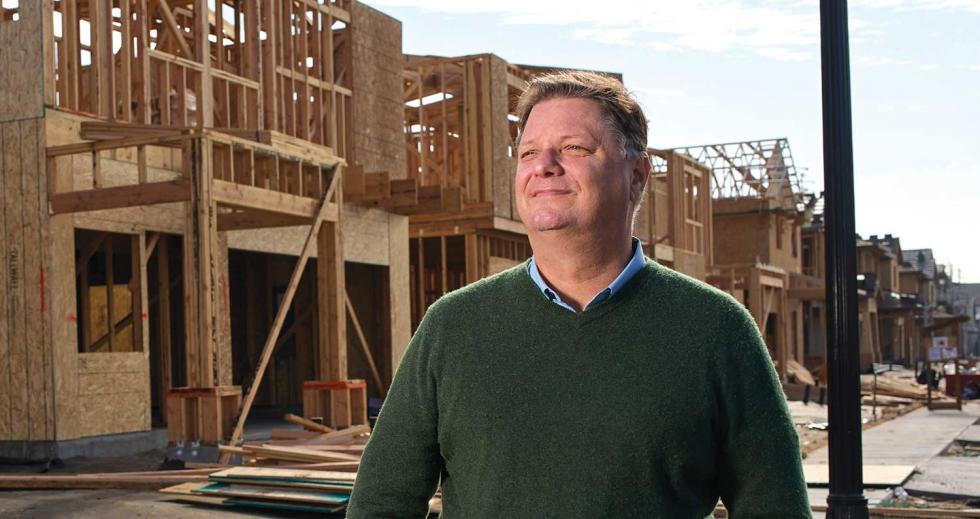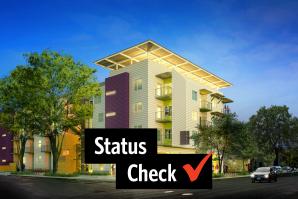When the coronavirus pandemic became a reality, Sara Muir braced for the worst. The Sacramento real estate agent knew an economic downturn would likely hurt business. In the days after California shut down most nonessential businesses in March, clients went silent. Muir and colleagues prepared for a crash.
But within a week, the calls returned. And before long, Muir was busier than ever. A deluge of new clients from the Bay Area, many of whom could now work from home, wanted more space at a lower price point. Sacramento fit the bill. “It has been crazy,” says Muir, an agent with Keller Williams. “Literally, since the start of (the) pandemic, I have been three to four times busier than I normally am.”
Muir’s experience isn’t unique. Pandemic-prompted changes in the way we work, including the acceptance and, in some cases, promotion of remote employment, is fueling a rush of new residents to the 10-county Capital Region. The influx is doing more than driving sales in an already competitive real estate market. Developers are struggling to keep up with demand for new houses. Some large Bay Area employers are beginning to follow the workers east, putting down a footprint of their own. Questions about the longevity of the trend and the region’s ability to keep up with changing workforce and real estate needs loom. But leaders in business and development say the trend could alter the trajectory of the region’s economy for years to come.
“This is a real sea change in the market position of the community,” says Barry Broome, president and CEO of the Greater Sacramento Economic Council. “It’s going to create an opportunity we’ve never seen before.”
Moving Drives Housing Boom
An influx of new residents, many of whom are believed to be high-income, highly educated young professionals, could have myriad long-term impacts on the region. But some of the earliest, and most obvious, are already apparent.
The region’s real estate market has seen skyrocketing home prices and competition for months. In Sacramento, the average time on the market dropped from 24 days in 2018 to just 10 days in 2020, a Forbes analysis of Redfin and Zillow data found.
And it’s not just Sacramento. The median price of homes in Stockton jumped 21 percent, from $390,000 in September 2018 to more than $472,000 in September 2020, according to the Forbes analysis. Officials in Solano County, already a popular home base for workers in San Francisco and Silicon Valley, thanks to its even closer proximity, have also reported a spike in home prices and sales. Robert Burris, president of the Solano Economic Development Corporation, hopes new construction already in the works, including a 7,000-home development near the Fairfield-Vacaville train station, will help.
“We have in excess of 10,000 homes being built in the next few years, and we feel like the increased demand is going to saturate that supply really quickly and really change the nature of Solano really quickly,” Burris says. “A lot of highly skilled, technically trained employees and their families are moving into the area.”
Demand for new home construction is booming across the region. Sales of new homes in the six-county Sacramento region for 2020 were expected to exceed 7,200, the highest since 2007, according to Greg Paquin, a housing analyst with The Gregory Group in Sacramento. That’s a 20 percent increase from the previous year. Paquin said during a North State Building Industry Association housing forecast in late October 2020 that he expects sales to jump another 10 percent in 2021, to roughly 8,000.
Consumer interest in more space and suburban living, combined with historically low interest rates and a regional housing shortage, are driving demand. Michael Strech, president and CEO of the North State BIA, says after the pandemic hit, developers saw an immediate increase in very serious buyers. Beyond some new pandemic-prompted features, such as soundproof home offices, larger porches for distanced socializing and package drop-off space, the wish list remains fairly basic.
Michael Strech, president and CEO of the North State Building
Industry Association, says homebuyers want to “live, work and
play in a home that is new, clean and safe,” such as this
development by DR Horton in Natomas. (Photo by Fred Greaves)

“They didn’t want to be in a one- or two-bedroom apartment without any exterior space. They wanted to live, work and play in a home that is new, clean and safe,” he says. “People can work 85 miles from where their home office is, and they may come in once a month and once a quarter, or they may never come in.”
Both trends can boost the local economy beyond increased home values and the property taxes the new residents might pay. An estimated 50,000 people work in the homebuilding industry, Strech says. While that figure includes agents and lawyers, many are contractors and construction jobs that can drive up employment.
“These are well-paying jobs,” says Strech, whose organization covers the Sacramento region. “They’re not minimum wage jobs, and they’re not jobs you can export to another country. They’re jobs right here in Roseville and West Sacramento, and they’re growing the economy.”
In addition to supporting those jobs, transplants are likely to send more cash into the local economies. New homeowners, Strech notes, often make dozens of trips to hardware stores in the first year. Spending could rise in other sectors too.
“You could see a little more sales tax and not just from more people. If they’re spending more time close to home and less time in the Bay Area because they don’t have to commute as much, that leads to more discretionary spending (here).”
JEFFREY MICHAEL Executive director, Center for Business and Policy Research, University of the Pacific
“You could see a little more sales tax and not just from more people,” says Jeffrey Michael, executive director of the Center for Business and Policy Research in the Eberhardt School of Business at the University of the Pacific. “If they’re spending more time close to home and less time in the Bay Area because they don’t have to commute as much, that leads to more discretionary spending (here).”
Broome says local business and political leaders should be thinking even bigger. While official labor data runs a year or more behind, GSEC is looking at consumer metrics using geofencing (collecting data from mobile devices) to better understand where the new transplants work. So far, it estimates that more than 200 Facebook employees moved to the region in 2020. That bodes well for the region’s post-pandemic recovery in terms of job stability and income levels. “The fact that we have Bay Area people moving up here basically means we will be able to flip a switch and turn the economy back on,” he says.
The demographics fueling the trend will have long tails when it comes to economic impact, Broome says. A 32-year-old with a degree, for example, could work another 30-40 years, and that’s the kind of worker profile that will attract more high-tech (and high-paying) employers to the region.
“If we can show data that we’re capturing our college students, and we can show data that young, bright professionals are coming to our community, now the entire workforce development of our community starts to change,” he says.
There are signs that it’s already making a difference. GSEC was talking to more than 150 high-interest companies about relocating or setting up a presence in the region as of fall of 2020, Broome says, up from 68 at the same time in 2019. Overall, inquiries were up sixfold over the summer.
“It made sense for us to relocate, because it wasn’t going to materially affect our business in a negative way being up here. A lot of the talent we needed, we could find in the Sacramento area.”
NEVILLE BOSTON Founder, Reviver
Last year, digital license plate company Reviver announced plans to move its headquarters from Foster City to Granite Bay. Neville Boston, founder and chief strategy officer, says cost was a big factor — office prices alone saved hundreds of thousands of dollars. But with 20 percent of the company’s workforce already living in the Sacramento area and commuting into Foster City several days a week, the move also made sense for employee retention and recruiting.
“It made sense for us to relocate, because it wasn’t going to materially affect our business in a negative way being up here,” he says. “A lot of the talent we needed, we could find in the Sacramento area.”
Workforce and Space Challenges Remain
The changes aren’t without challenges. The Capital Region already faces a shortage of housing, including affordable options. One regional assessment estimates that the region must add more than 150,000 dwellings, including 60,000-plus low-income units, in the next two decades to keep up with need. Advocates say that’s the tip of the iceberg.
Builders, real estate agents and advocates worry the demand from high-income transplants will push costs even higher, including in Midtown Sacramento neighborhoods that historically have been home to both young professionals and lower-wage workers in service and hospitality industries.
“We just do not have enough affordable housing and then on top of the fact that more people are looking to purchase in the region is really creating a lot of instability in neighborhoods and places people have been able to afford to live,” says Kendra Lewis, president of the Sacramento Housing Alliance.
Strech agrees that housing stock and prices are a big problem. Workforce and national supply chain issues, including lumber shortages, threaten to further slow construction and add to the cost. His organization is pushing state and local governments to lift some regulation and fees to speed up more development in the short term.
“The uptick in activity has really created a positive narrative for our industry to say we need to get serious about housing in California, and we need to figure out ways to break down barriers and provide our residents with the shelter they want and they need,” he says. “We need to address that crisis right along with the pandemic.”
More commercial real estate options are needed too, Broome says. As the pandemic lifts, he hopes more tech companies will want a physical footprint in Sacramento to accommodate relocated employees and hire from a growing pool of highly skilled workers. Similar to residential real estate, Sacramento can offer better prices for offices than the Bay Area. But in recent years, Broome’s fielded inquiries from large companies for 200,000-square-foot office space that just “doesn’t exist in the community.” Projects in developments such as Aggie Square adjacent to the UC Davis Medical Center, will help, Broome says.
But because the companies don’t have time to wait a year or more for new construction, Broome has proposed marketing and leasing some state buildings to commercial clients. “We have to start pivoting away from our old real estate model,” he says. “We haven’t had the right real estate model in 20-30 years.”
Solano County is also making moves to attract more headquarters. Burris is focusing on a need for more flexible corporate space that caters to high-tech companies, including in the biotech and food innovation industries. He expects to see even more businesses follow their employees and relocate to his area in the years ahead. “Just with that momentum, the companies that they work for, especially smaller ones, will have to seriously consider moving towards where their employers are going,” Burris says.
Workforce and capital also remain issues. Sustaining a larger local tech industry will mean training more employees in computer engineering and other in-demand fields. And attracting new investment funds and startup accelerators to the area is key to providing opportunities for tech workers with entrepreneurial aspirations and convince them to stay and found their businesses in the region, facilitating the shift from a government town to a tech hub.
“If we can get those funds off the ground, continue to build out acceleration space and continue to vacate office real estate, since we don’t build offices, you’re really going to see things come together in the next three to four years,” Broome says.
Other factors likely to affect the long-term trajectory of the trend are less tangible. The recent surge provides evidence the region can attract a highly coveted workforce. But one big question, and a challenge for leaders, is whether that migration continues and whether those workers stick around post-pandemic.
Many experts expect that major workplaces, especially in the tech industry, will continue to accommodate and, in some cases, even promote remote work. Dropbox and Twitter are among the companies that have already announced plans to make working from home the norm, not the exception. Other tech giants, including Facebook and Microsoft, have signaled that they will keep the option on the table for many of their tens of thousands of employees. In another sign of the shift to flexible work, Pinterest in August 2020 paid $89.5 million to cancel a lease on a 490,000-square-foot office in San Francisco.
Those changes have emboldened more workers to consider leaving the Bay Area. And even a partial return to normal office culture could help the Sacramento area continue to attract more tech workers to its communities. “If you don’t have to commute every single day, that extends the distance people are going to move for their workplace,” UOP’s Michael says. “Sacramento is too far away for daily commuting, but if it’s once or twice a week you need to be available, it’s more viable than in the past.”
But there are other changes that could slow the shift. The Bay Area exodus is also causing rents in San Francisco and surrounding cities to drop. By late 2020, rents had fallen 20 percent in some neighborhoods, according to private-listing websites. That could, eventually, draw more people back to San Francisco, especially when dining and cultural scenes largely paused due to the pandemic are back in full swing.
“High rents and high costs have been pushing people inland to begin with, making people willing to commute” Michael says. “At the same time … the same factors are reducing the cost of living in the Bay Area and making it a little bit less of a burden.”
‘Offer a Good Quality of Life’
So what can the region do to counteract that possible pullback to the Bay Area? The push to get more companies to put down physical roots and expand the region’s workforce and economy should make Sacramento an attractive and viable destination, leaders say. And many believe inertia will play a role, especially for homebuyers. Once someone’s settled into more space and an easier lifestyle, moving back to smaller quarters can be less appealing, even if the prices drop.
While housing stock, prices and the future presence of employers will help, experts agree that less tangible factors such as culture and community will play a big role. “The key to attracting these high-skilled, high-wage workers is to offer a good quality of life,” Michael says. “It’s important to continue to invest in the amenities that these workers are seeking. “A lower price tag is important, but they want the parks and safety and community amenities as well. Those are pretty critical.”
The region’s reputation as a farm-to-fork capital has already helped, and music and art events such as the Aftershock Festival and Wide Open Walls attract visitors from outside the area. And a Major League Soccer stadium set to open in 2023 will bring even more bustle and activity downtown. In addition to hosting Republic FC, the venue has already booked several major NCAA events.
“Fifteen years ago, we were a cow town,” Muir, the real estate agent, says. “It’s true it wasn’t that exciting. I think within the last decade we’ve just gone really far into being more of a hip, cool place.”
Muir sees no sign of a slowdown. Even after the pandemic ends, she expects the migration to have a magnet effect as friends and others see the benefits of moving east. “The more people who come here,” she says, “the more people will follow.”
–
Tell us what you want to see in Comstock’s: Take our reader feedback survey and be entered to win a $100 gift card.
Recommended For You

How the Remote Work Revolution Could Change California’s Housing Crisis
A huge number of people have been working from home for the better part of the year. The long-term implications for housing will likely benefit higher-earning workers and hurt lower income Californians.

California Bond Program Helps Cities Secure Middle-Income Housing Without Upfront Cost
A new program run by the California Statewide Communities Development Authority is designed to help cities meet their goals for housing middle-income residents.

Status Check: Sacramento’s Lavender Courtyard
The city’s first affordable housing project for LGBTQ older adults should break ground later this year
The vacant lot at 16th and F streets in Sacramento — the future site of Lavender Courtyard, the city’s first LGBTQ-friendly affordable housing for older adults — is still empty, but it won’t be for long.

A Move to Midtown Might Not Be in the Cards
To open our annual housing issue, Comstock’s executive editor weighs the pros and cons of moving to Midtown Sacramento.




